Sign up for daily news updates from CleanTechnica on email. Or follow us on Google News!
The new Aventon Ramblas eMTB, with its powerful mid-drive motor paired with a torque sensor, ticks all the right boxes. The Ramblas is jam-packed with features that make it a fun, fast, and powerful bike that feels as rugged as it is comfortable. Aventon sent me a Ramblas to review, and I’ve been putting it through its paces on both the trail and the pavement so I can bring you a hands-on evaluation of (spoiler alert) what just might be my new favorite e-bike.
We’ve ridden and reviewed a number of Aventon models on CleanTechnica in recent years, with virtually every single model proving to be well-designed and well-built, and the Ramblas is no exception. In fact, in my opinion, this is by far the best bike in the company’s lineup so far, although I will admit that I usually prefer mountain bikes and off-road e-bikes over cruiser and commuter bikes, so your mileage may vary.
Although the Ramblas is Aventon’s first electric mountain bike, it certainly doesn’t come off as anything less than a high quality build, so it’s clear that the company put some serious thought into it and brought its A-game to the table when designing it. The A-100 mid-drive motor, which is also a new product that was designed by Aventon, which isn’t something you see very often from bike companies, as there are already a bunch of solid mid-drive motors on the market that other e-bike companies use in their models. This model is Aventon’s first mid-drive bike, and the Ramblas comes in at a great price when compared to many of the other mid-drive eMTBs that are available right now.
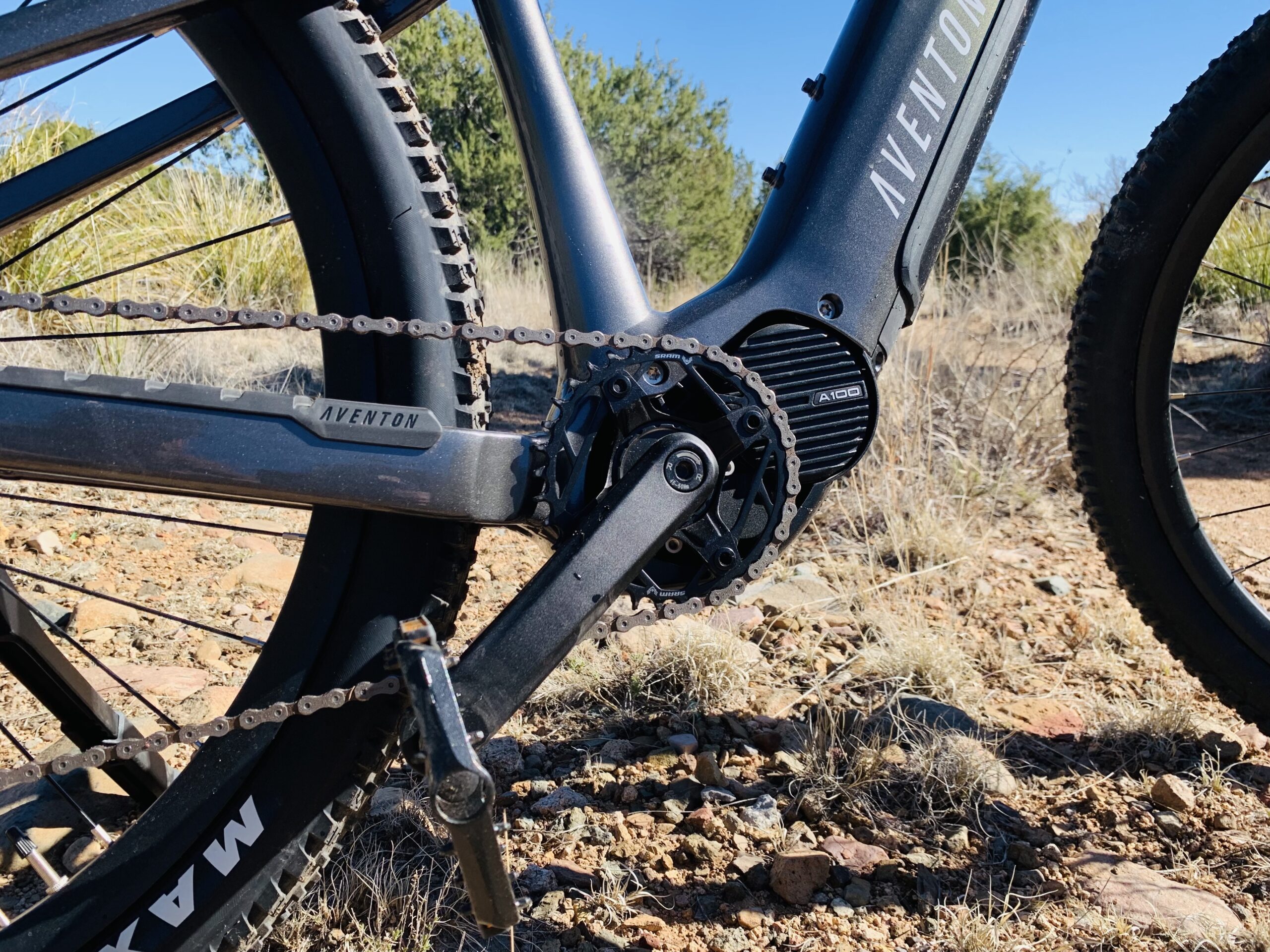
Unboxing the Ramblas
Right out of the box, it’s evident that the Ramblas is a quality build, and like most modern e-bikes is quick and easy to assemble (actually to just finish the assembly, as it’s a rather simple matter to install the handlebars, the front wheel, and the pedals). I won’t really go into the unboxing here other than to point out that almost all of the packaging for the Ramblas is fully recyclable, which is a far cry from the early days of e-bikes that were often shipped with a ton of plastic and foam, which often weren’t easily recyclable. I will say that after putting together a number of different e-bikes over the years, I’d encourage any new e-bike buyer to go ahead and assemble it yourself, unless you’re a complete klutz who is all thumbs, in which case, I do recommend having your local bike shop (or a friend who’s handy) do it for you just for own safety’s sake.
Riding the Ramblas
My initial impression of the Ramblas while on its first quick shakedown cruise after assembly was that riding this e-bike feels very organic — similar to pedaling a non-electric bike — and that the powerful mid-drive motor (capable of producing 100Nm of force) paired with a torque sensor made the bike’s drivetrain very responsive to the rider. Instead of the punchy on/off feeling that many e-bikes with hub motors and cadence sensors can have, the Ramblas just felt natural to ride, and when switching from pedaling it soft and easy to really mashing down on the pedals, it delivered a response akin to what I’d expect from my ‘acoustic’ MTB (except for all that additional power, of course).
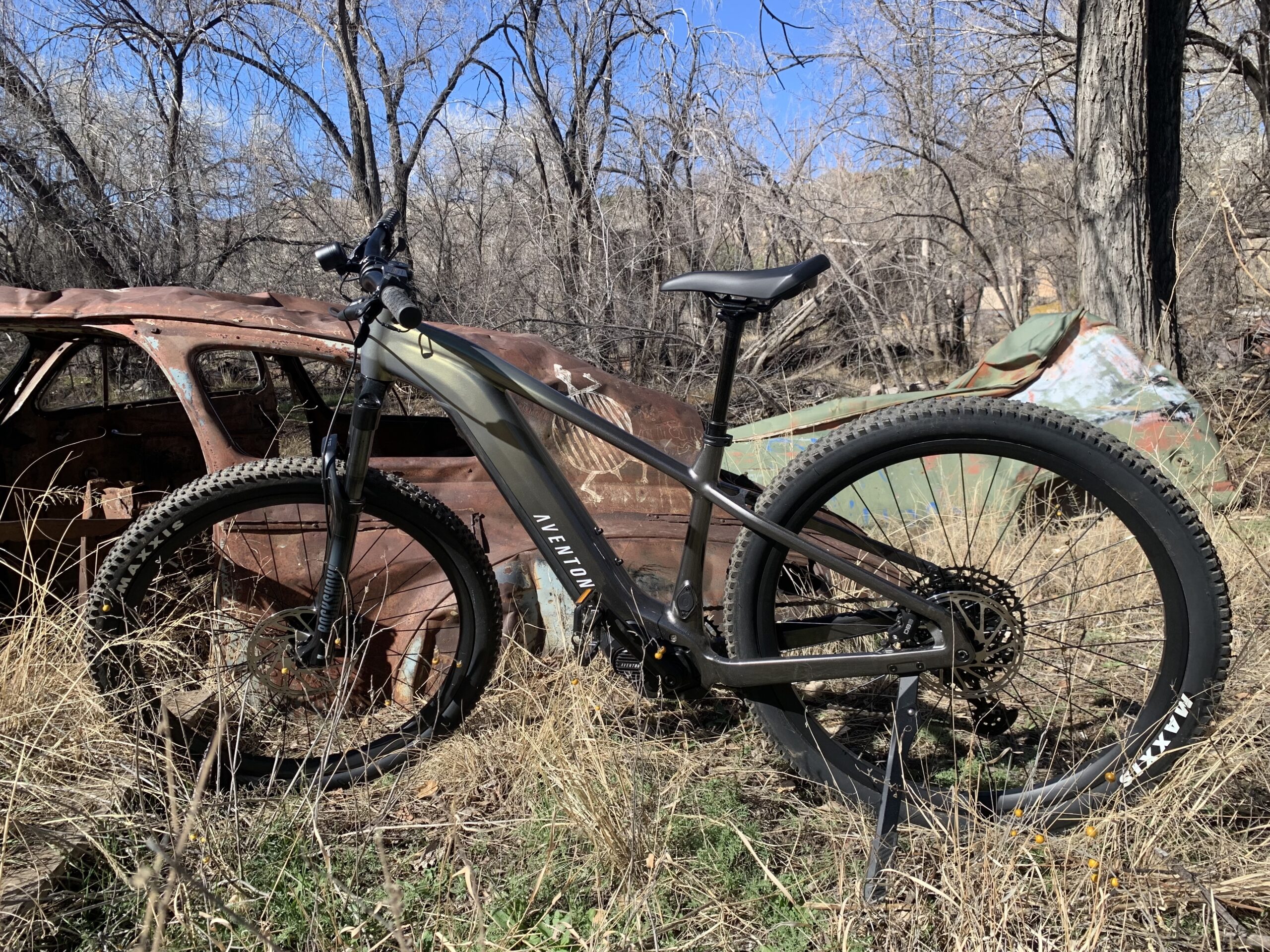
On later rides, I was able to get a really good feel for the Ramblas and start riding it a bit more aggressively, mostly on a singletrack with a bunch of ups and downs and bumps and turns to it, but also on pavement. On a trail with some technical or challenging sections, there is a little bit of a learning curve to it, as picking the right pedal assist level was key to staying upright, as well as figuring out just how much force to pedal with depending on the assist level and which gear you’re in (see below about tuning the motor to suit your needs). It’s not difficult, it just takes some recalibrating in your brain, as an e-bike isn’t quite as forgiving as a non-electric bike when riding at speed or through tricky sections (don’t ask me how I know that).
That said, even though the Rambas weighs in at about 54 pounds (which is considerable when compared to a non-electric MTB), it sure doesn’t feel like it. It rides like a bike half its weight, and between the Rockshox fork and 29-er fat tires, is pretty comfortable to ride and handles really well even when tackling really bumpy and rocky terrain. The dropper post is a nice touch, as being able to lower the saddle on the fly for more room in the cockpit when descending is a great feature that many/most fat tire off-road e-bikes do not have. The Sram NX Eagle 12-speed drivetrain, with just a single chainring up front, is snappy and precise, and the Sram 4-piston hydraulic disc brakes provide plenty of stopping power while also allowing for plenty of ‘nuance’ when feathering the brakes.
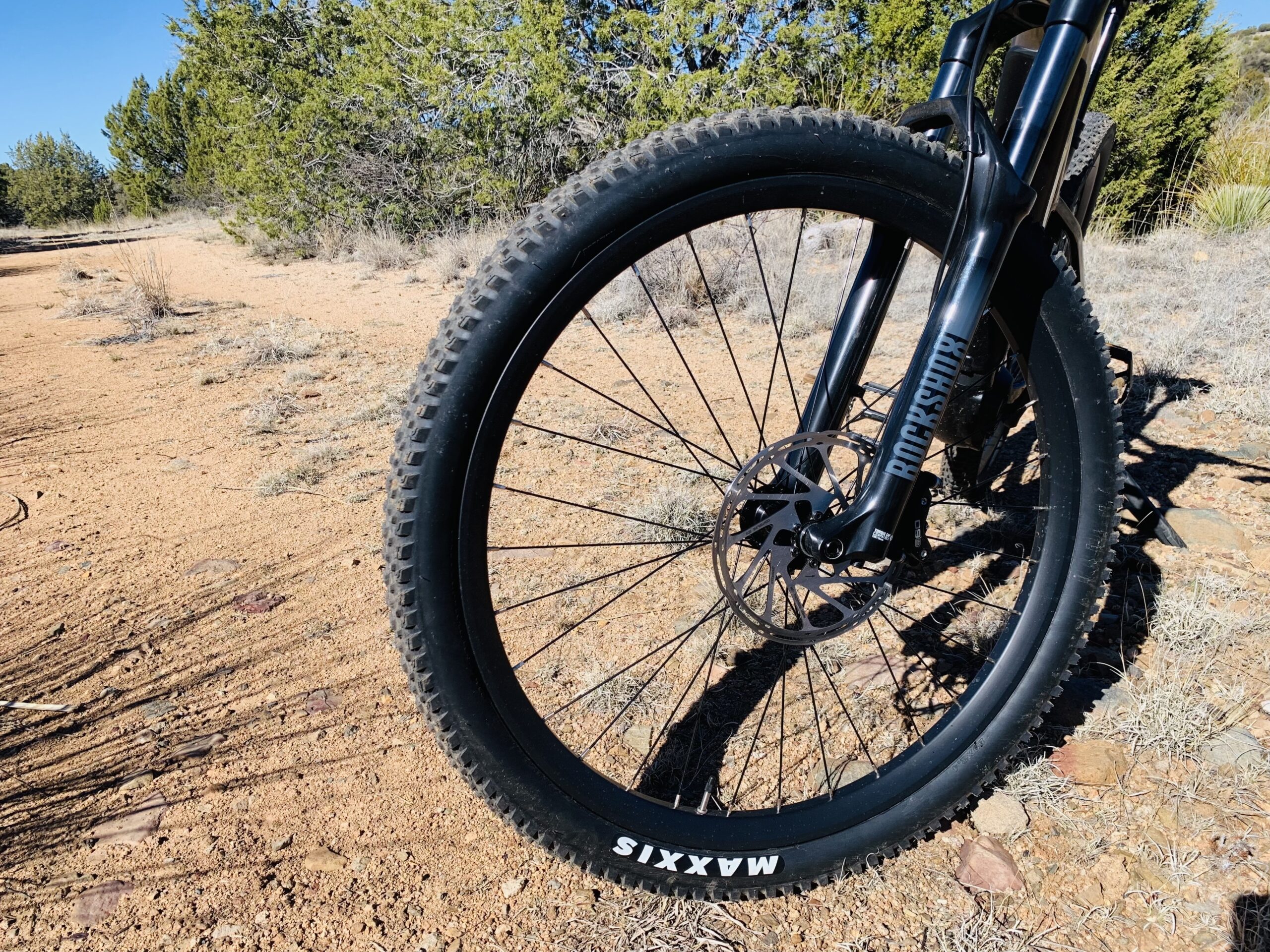
Aventon puts the estimated range per charge of the Ramblas with its 708 Wh battery at “up to 80 miles,” which of course depends on where and how it’s ridden — on a flat grade on the Eco level of pedal assist versus on uphill rides using the Turbo level — and although I haven’t yet run the battery completely flat to test out the range, the estimated ranges seem reasonably accurate to me so far. In the manual it states a range of up to 120 miles for the max (Eco level), and 45 miles when riding in hilly terrain using the Turbo level.
 Chip in a few dollars a month to help support independent cleantech coverage that helps to accelerate the cleantech revolution!
Chip in a few dollars a month to help support independent cleantech coverage that helps to accelerate the cleantech revolution!
The Ramblas Is Tunable
One other feature that really stood out to me was the tunable nature of the motor through the Aventon app, which allows you to personalize how each pedal assist level performs. There are three pedal assist levels — Eco, Trail, and Turbo — and within the settings, you can dial in the parameters of each one to best suit your riding style and/or terrain, which I have just started digging in to and messing about with.
I’ll let Aventon explain briefly what settings can be adjusted via the Ride Tune feature in the app:
- Assistance: Assistance is the motor’s power contribution to the rider’s effort. For instance, at 50% it adds 30 watts to your 60 watt output, while 100% adds 60 watts.
- Max Torque: Max Torque can be adjusted to change the feel of how you ride. Decreasing the max torque provides a more natural ride feel and increases battery range.
- Acceleration: Acceleration determines the bike’s initial power from a stop. Higher settings mean quicker response, while lower settings offer a more natural feel.
So for example, if you find that the Trail pedal assist level accelerates too quickly for your taste (or the conditions), you can reduce the acceleration percentage, or if it’s not powerful enough on the uphills, you can boost the amount of torque. The default settings for the 3 pedal assist levels are good, don’t get me wrong, but being able to tweak them to better fit the route you’re on or your own personal riding style is rather nice touch.
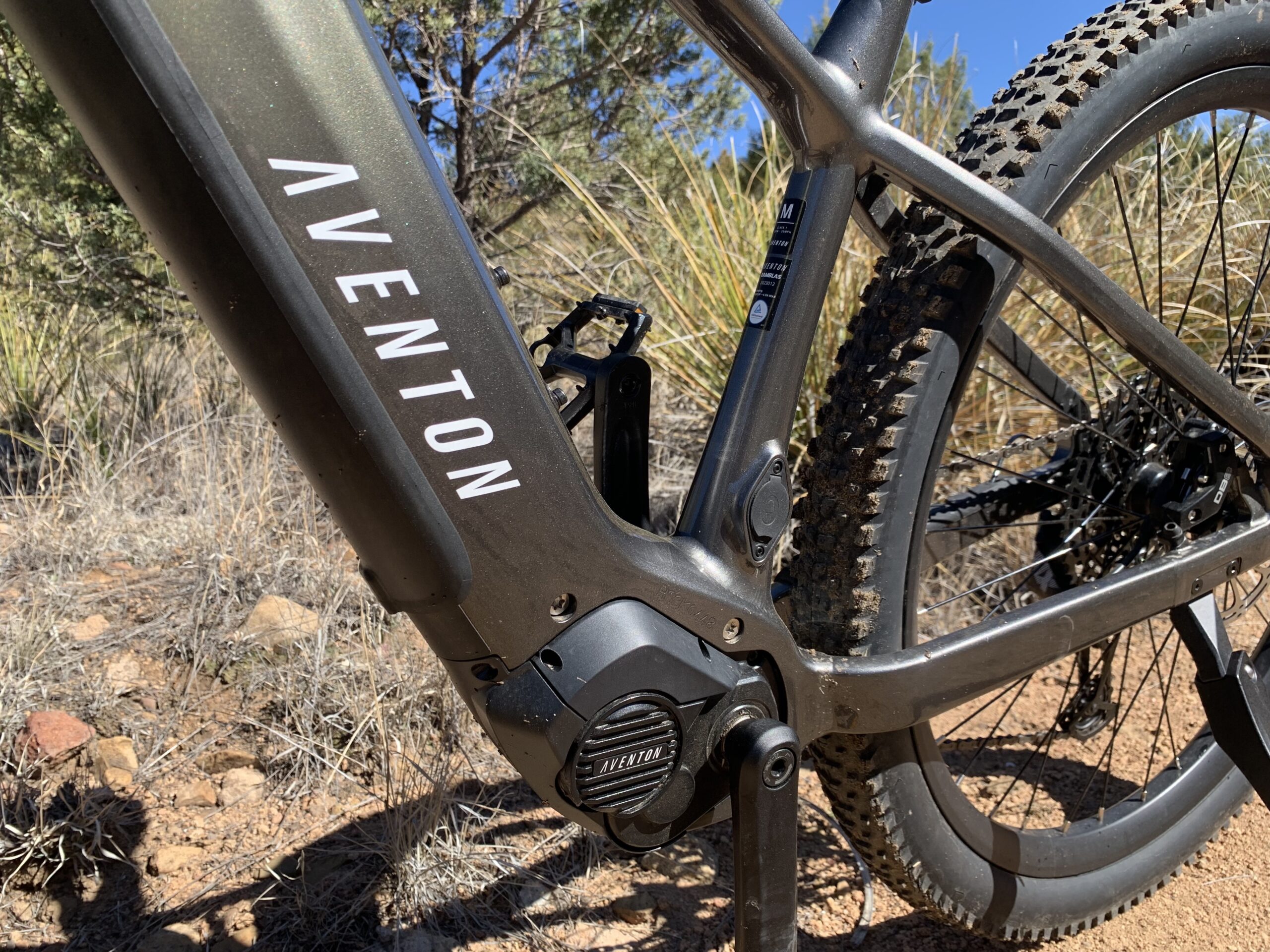
Overall
In my experience, the Ramblas is a solid contender in the eMTB category, and delivers a lot of value for its price. And it’s not only super capable and fun to ride, it’s also visually appealing. Sure, it only comes in one color at the moment — Borealis — but it’s a beautiful sort of sparkly green/gray combo, which isn’t really captured in the photos. Plus, the Ramblas is a really clean build, with all of the cables but one (for the front brake) internally routed and not flopping around, so to speak, as they are on some e-bikes.
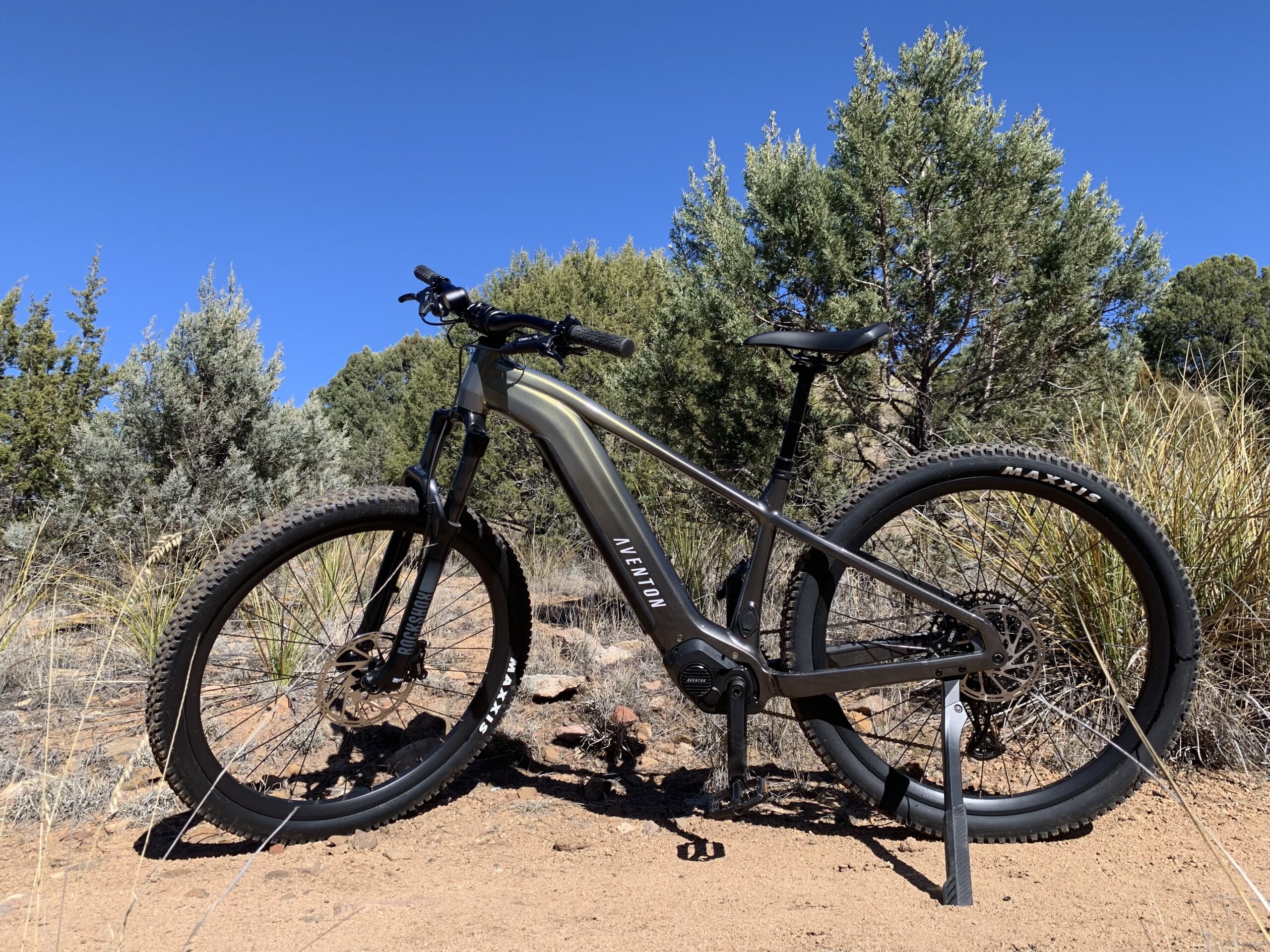
I was telling a friend of mine who runs a local bike shop that sells Aventon e-bikes about my impressions of this model, and his reply was that they had sold their first Ramblas to a customer before it was even assembled and out on the sales floor, so I’m fairly certain that these bikes are going to be really popular — especially for people who have considered buying a similar mid-drive e-bike from a big legacy brand like Specialized or Trek but who maybe couldn’t afford the price. Now of course, serious cyclists could make the argument that there are significant differences between the Ramblas and those from other brands (in my opinion, mostly the use of higher end components in the drivetrain, but also the cachet of the brand), so it’s not a completely apples-to-apples comparison, but for the casual cyclist the bikes are close enough — and good enough — for all of the riding they are likely to do.
The Ramblas is priced at $2699, which feels like a really great price point for an electric mountain bike to me, considering it has a torquey mid-drive motor and is built with quality components. It also comes with a 2-year warranty, which (to me) speaks to how confident Aventon is about how the Ramblas will perform and hold up to being ridden hard (but not put away wet).
Disclosure: Aventon supplied a review model of the Ramblas to the author.
Have a tip for CleanTechnica? Want to advertise? Want to suggest a guest for our CleanTech Talk podcast? Contact us here.
Latest CleanTechnica TV Video
CleanTechnica uses affiliate links. See our policy here.





